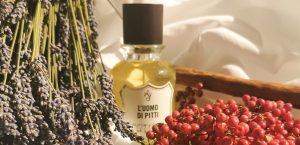Cutaneous hyperpigmentation
is a skin condition characterized by the presence of more or less extensive dark spots or areas. Usually, these spots are due to abnormal and excessive melanin production (hyperpigmentation), which can occur for various reasons, primarily exposure to UV rays. Other causes can be skin injuries, the presence of acne, and hormonal imbalances.
Depending on the causes, cutaneous hyperpigmentation is divided into two types:
Diffuse: spots are associated with vitamin deficiencies, metabolic causes, autoimmune diseases, or some medications. In this case, it is recommended to consult a dermatologist as it is essential to accurately document physical conditions, timing, onset, symptom duration, and other details.
Localized: refers to post-inflammatory spots, such as post-acne spots, melasma, or age spots. In this case, cosmetic treatments can be used; if this is not enough, consult a dermatologist.
Let’s now take a closer look at localized spots:
MELASMA: also known as hormonal hyperpigmentation, is caused by high levels of estrogen, to the extent that it appears especially during hormone therapy, pregnancy, or contraceptive treatment (e.g., birth control pill). This condition is exacerbated by sun exposure, especially if you expose yourself to the sun without sun protection.
AGE SPOTS: also known as photoaging spots, are caused by overexposure to the sun, which triggers an overproduction of melanin. In addition to exposure to UV rays, there is exposure to pollutants, dust, and gas: a mix favorable to free radicals that unleash their oxidizing action and lead to premature photoaging.
POST-INFLAMMATORY SPOTS: caused by acquired hypermelanosis that occurs following an inflammatory response or skin injury. The most common example is represented by post-acne spots. These spots worsen significantly if not protected with sunscreen.
As we have said, for this type of spots, in some cases, a cosmetic treatment may be sufficient. Therefore, it is necessary to adopt proper skincare using specific products for hyperpigmentation, without forgetting the essential steps for the general well-being of the skin. Do not underestimate the importance of cleansing and the needs of different skin types depending on age, nutrition, and hydration.
Let’s now see what are the useful and specific cosmetic active ingredients for the treatment of localized spots:
EXFOLIATING ACIDS: salicylic acid and glycolic acid are the most common. Their exfoliating action depends not only on the ability to stimulate the physiological turnover of epidermal cells but also on helping the skin to get rid of dead cells from the most superficial layers, leaving room for new ones. The “strength” of the peeling depends on the concentration of exfoliating acids: it is not so much age that determines when and how that particular acid should be used but the “condition” of the skin. For this reason, before using these acids, it is necessary to seek advice from a dermatologist to avoid irritations and the risk of photosensitization.
NIACINAMIDE: counters spots because it can inhibit the transfer of melanin pigments from the basal layer, where melanin forms, to the stratum corneum, the most superficial layer of the skin. It also protects against aging because it promotes collagen synthesis and has an antioxidant action. It can be used morning and evening.
We can find Niacinamide in IMMUNO 6 CREAM: a concentrate of antioxidant, nourishing, and anti-aging active ingredients, which makes this cream a complete product that evens, hydrates, and nourishes the skin simultaneously. Its rich texture makes it an excellent night cream, and in the case of very dry skin, also a day cream.
RETINOL: In addition to stimulating collagen production, it also stimulates deep cell turnover. This latter action should not be confused with exfoliation! Once absorbed by the skin, retinol communicates to skin cells to produce new ones, without exerting an exfoliating action.
The only caution: retinol is photosensitizing, so it should only be applied to the skin in the evening. The morning after use, remember to always use a sunscreen with an SPF of 30 or higher.
We find it in LA NOTTE DI ANGELICA: the combination of Retinol, Vitamin C and Vitamin E reduces oxidative stress that the skin undergoes due to both aging and external factors. As we mentioned, the presence of retinol makes it suitable for exclusive nighttime use.
VITAMIN C: This substance is very common in the cosmetic world, as it has both lightening and anti-aging properties. Its lightening power is based on its ability to inhibit the activity of tyrosinase, the enzyme involved in the synthesis of melanin, whose production is thus reduced. Its anti-aging action, on the other hand, depends on the fact that it stimulates collagen production and is also an effective preventative against free radical damage that causes cellular aging.
For an intensive vitamin C treatment, combining a serum and a cream based on this active ingredient is optimal, such as the LIGHTENING VITAMIN SERUM and JEUNESSE NIGHT&DAY CREAM: the serum acts in the deeper layers of the skin, the cream on the superficial layer. Both products have a marked lightening and anti-aging action and can be used both day and night.
ROSE HIP OIL: for those with very dry skin who prefer to use oils rather than creams, this vegetable oil is a valid alternative to lighten not only spots, but also scars and stretch marks. The ROSE HIP OIL STICK is 100% natural and cold-pressed, and thanks to its 10ml roll-on stick version, it is very practical to apply to the face or hands. For larger areas, we recommend the 100ml ROSE HIP OIL.
And then an ESSENTIAL product when it comes to skin spots: BIO SUN CREAM SPF 50+. For those with hyperpigmentation, this product should be part of their daily skincare routine, even on winter sunny days. In the morning, after applying moisturizer, simply apply a thin layer for prolonged protection. In addition to shielding existing spots, it prevents the appearance of new spots, but above all, it protects the skin from photo-aging, preventing the appearance of wrinkles.
by CHIARA DUILIO
BIOLOGIST





 Sensitive skin is defined as skin that, unless suffering from certain skin diseases, is more predisposed to negatively react to chemical or physical agents. In addition, sensitive skin is more susceptible to allergies, redness, irritation, itching, and skin burning. (1) However, sensitive skin is not always synonymous with allergy: often the general symptoms of skin hypersensitivity are mistakenly judged to be warning signs of intolerance or allergies to certain cosmetic ingredients. In reality, common sensitive skin does not refer to any immunological cause. (1)
Sensitive skin is defined as skin that, unless suffering from certain skin diseases, is more predisposed to negatively react to chemical or physical agents. In addition, sensitive skin is more susceptible to allergies, redness, irritation, itching, and skin burning. (1) However, sensitive skin is not always synonymous with allergy: often the general symptoms of skin hypersensitivity are mistakenly judged to be warning signs of intolerance or allergies to certain cosmetic ingredients. In reality, common sensitive skin does not refer to any immunological cause. (1)